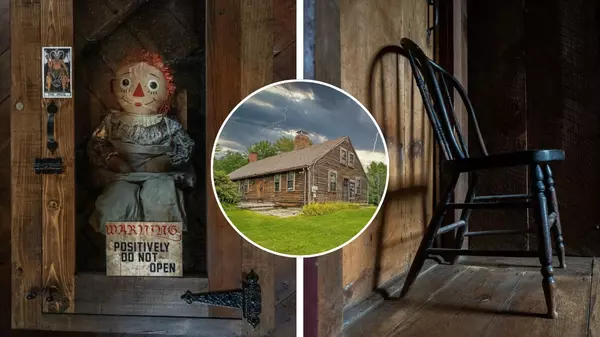Single-Family vs. Multifamily Homes—Which Builds Equity Faster?
The single-family home has long been the cornerstone of the American dream—and for decades, it’s delivered some of the strongest returns on investment in real estate. But as affordability slips out of reach and the price of some starter homes climbs into the millions, that dream is starting to splinter. Across the country, families are rethinking how they live—pooling resources, embracing multigenerational households, or renting in multifamily buildings instead of buying solo.
It’s equal parts conundrum and opportunity for investors: Does a single-family home build wealth faster, or do small multifamily properties outperform?
Right now, the data is split.
Multifamily conditions are improving sharply: Freddie Mac’s Apartment Investment Market Index—which measures multifamily investment opportunity—climbed 7.6% year over year in the second quarter of 2025, reaching its highest level in nearly two years. That increase, driven by 3.7% growth in net operating income and lower mortgage rates, signals that apartment investors are getting more income per dollar of property value than they did a year ago.
By contrast, the S&P CoreLogic Case-Shiller Index, which tracks single-family home prices, shows the opposite trend: Appreciation is slowing. The national index rose just 1.7% annually in July, down from 1.9% in June—its weakest growth in years. Month over month, national prices also declined for the second straight time, even during what’s typically the peak buying season.
Taken together, these indexes reveal a widening gap between appreciation and income growth. While single-family homes have historically been the surest path to equity, multifamily properties are gaining the upper hand in yield, offering consistent cash flow and a natural hedge against price volatility.
Why single-family homes tend to appreciate faster
Looking at equity alone, the experts we spoke to resoundingly pointed to single-family homes as the clear winner for one simple reason: They offer a lifestyle that more people want.
“In South Florida, single-family homes have traditionally seen faster appreciation, especially in popular neighborhoods where land is limited and buyers are looking for lifestyle,” says Eloy Carmenate of The Corcoran Group. “Families will often pay a premium for the right school district or a backyard near the water; that emotional factor really drives value.”
That lifestyle premium has been a consistent driver of price growth, especially in suburban areas where buyers will pay big for quality-of-life features like schools, space, and privacy.
In contrast, multifamily property appreciation tends to follow income potential over emotional sentiment.
“Multifamily properties do appreciate, too, but their growth tends to follow rental income rather than market excitement,” Carmenate explains.
Single-family homes also offer greater liquidity and exit flexibility, which can add to investors’ returns.
“For investors with a five- to 10-year horizon, single-family homes typically build equity faster—thanks to more liquid resale markets and stronger emotional-buying premiums from homeowners,” says Eric Hughes, a real estate investor and coach.
Put simply, there are more buyers for single-family homes, so it’s easier to sell these properties when the time comes.
Still, Hughes notes that not every investor is chasing appreciation.
“For those prioritizing steady monthly income or looking to scale faster, a duplex or triplex can make sense even with slower price growth,” he says.
When multifamily income outweighs slower equity growth
So, when does investing in a multifamily home make more sense? While duplex or triplex appreciation can lag behind single-family homes, the additional rental income and cash flow can more than make up the difference.
“Multifamily rental income can warrant slower equity growth, especially in stable or slow-appreciation markets,” says Fred Loguidice, an agent and founder of Sell My House Fast DFW. “Multifamily residences are a better choice if upfront cash flow is a necessity. The reason they can yield cash flow from many tenants is that they are less vulnerable to drops in the market, so investors can still get a return when house prices are not going through the roof.”
That key here is diversification: Even if one unit sits vacant, others continue generating income. It’s a built-in hedge against market dips that can strain single-family investors who rely on a single rent check.
Loguidice points to Denver and Austin, TX, as key examples. While rents in these markets have pulled back from recent highs over the past year, the median rent for the U.S. is still up almost 19% compared to pre-pandemic era, according to data from Realtor.com®.
But there are other considerations with these properties, notes Adam Hamilton, CEO of REI Hub, an accounting software for rental owners.
“These properties are bigger and have more utility and maintenance needs, so the investment on your end will be bigger as well,” he says. “Because of that, it can take longer to break even; but once you do, your profits will increase in a steeper manner than with single-family homes.”
Matching property type to investment timeline
As with all investing, you’ll need to align your property type with your goals. Whether you’re planning to flip for quick gains or build wealth over time, your strategy determines which investment makes more sense.
“If you’re planning to flip in a few years, single-family homes are usually easier to sell and refinance,” says Carmenate. “They attract a wider pool of buyers and tend to move faster, especially in desirable neighborhoods where demand remains high.”
For long-term investors, though, multifamily properties can be powerful wealth builders.
“With a duplex or triplex, you’re earning rental income every month while the property slowly appreciates,” he adds. “That consistent cash flow gives investors more flexibility, whether they’re holding the property indefinitely or refinancing to expand their portfolio.”
In markets where single-family inventory is tight—like the Northeast—limited supply can push appreciation even higher, rewarding short-term investors who time the market well. But in urban areas with strong rental demand, multifamily properties can offer better long-term stability.
Multigenerational living is changing the investment math
The rise of multigenerational living is another important consideration for investors. As housing costs climb and families look for creative ways to stay connected, homes that can accommodate multiple generations or flexible uses are becoming hot commodities.
Both Carmenate and Loguidice note that flexible layouts are driving new demand.
“We’re seeing more families in South Florida looking for homes that can accommodate multiple generations—whether it’s a guest suite, an ADU, or a duplex,” Carmenate says. “That trend is boosting the value of properties that offer flexibility.”
In some markets, accessory dwelling units offer a secondary investment opportunity. In San Jose, CA, and San Francisco, new ordinances adopted in late 2024 and early 2025 allow owners to sell ADUs as separate units—much like condominiums. While no such sales have closed yet, the policy shows how cities are also trying to incentivize flexible housing solutions.
Adaptable homes are positioned to outperform less versatile properties over time. As shared living becomes more common, the ability to generate income or accommodate relatives under one roof will remain one of the housing market’s most durable selling points.
Categories
Recent Posts










GET MORE INFORMATION

